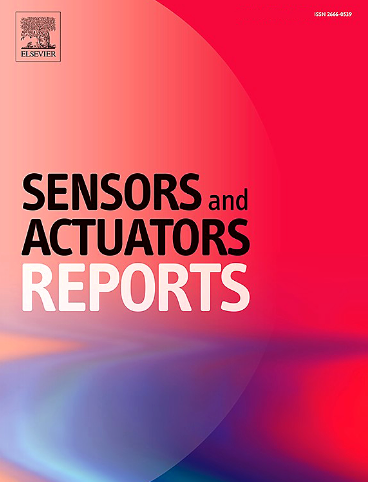释放UiO-66-NH2纳米酶的潜力:体液外泌体生物标志物检测的新方法
IF 7.6
Q1 BIOTECHNOLOGY & APPLIED MICROBIOLOGY
引用次数: 0
摘要
外泌体是细胞外囊泡(ev)的一个亚群,作为诊断和治疗的有前途的工具正在获得其地位。然而,由于缺乏具有成本效益和直接的检测和表征方法,它们的广泛应用受到阻碍。为了解决这一挑战,我们的研究引入了一种利用UiO-66-NH2纳米酶(UiO-66-NH2 NZ)检测外泌体的比色纳米传感器。成功合成了纳米酶,并利用XRD、FTIR、EDS、TEM、DLS和zeta电位等技术对其进行了表征。为此,从人tert永生化MSCs (hTERT-MSCs)中提取外泌体,然后使用FE-SEM成像、AFM成像、DLS分析、zeta电位测量和流式细胞术对特定标记物进行表征。在条件细胞培养基和人血浆中检测UiO-66-NH2 NZs的药效。通过这种方法,确定了不同浓度外泌体的检测限(LOD)和响应趋势。根据比色分析,在较低的外泌体浓度下,纳米酶在两分钟内诱导了从无色到绿蓝色的可见颜色转变。通过将外泌体浓度与外泌体裂解物和细胞悬浮液的浓度进行比较,验证了我们方法的选择性。通过确认该检测对血浆样本的适用性以及在临床层面的潜在应用,进行了进一步评估。与CD63适配体修饰的纳米酶相比,裸UiO-66-NH2 NZs在检测外泌体中的应用更为突出。从HT-29结直肠癌细胞和HFF成纤维细胞中快速检测外泌体证实了该检测方法作为开发特异性外泌体临床应用的一种有前途的方法的适用性。本文章由计算机程序翻译,如有差异,请以英文原文为准。

Unleashing the potential of UiO-66-NH2 nanozyme: A novel approach to exosomal biomarkers detection in body fluids
Exosomes, a subgroup of extracellular vesicles (EVs), are gaining their position as promising tools for diagnostic and treatment purposes. Their widespread application is however hindered by the lack of cost-effective and straightforward methods for detection and characterization. Addressing this challenge, our study introduces a colorimetric nanosensor utilizing a UiO-66-NH2 nanozyme (UiO-66-NH2 NZ) for the detection of exosomes. The nanozyme was synthesized successfully and characterized using various techniques including XRD, FTIR, EDS, TEM, DLS, and zeta potential. For this purpose, exosomes from human TERT-immortalized MSCs (hTERT-MSCs) were extracted and then characterized using FE-SEM imaging, AFM imaging, DLS analysis, zeta potential measurement, and flow cytometry for specific markers. The efficacy of UiO-66-NH2 NZs was tested for conditioned cell culture medium and human blood plasma. In this way, the limits of detection (LOD) and the trend of response for different concentrations of exosomes were defined. Based on a colorimetric analysis, at lower exosome concentrations, the nanozyme induced a visible color shift from colorless to green-blue within two minutes. The selectivity of our method was validated by comparing exosome concentrations with those of exosome lysates and cell suspensions. Further assessment was conducted by confirming the suitability of the test for the samples from blood plasma, with potential applications at the clinical level. Compared with CD63 aptamer-modified nanozymes, the utility of bare UiO-66-NH2 NZs in exosome detection was prominent. The rapid detection of exosomes from HT-29 colorectal adenocarcinoma cells and HFF fibroblastic cells confirmed the suitability of this assay as a promising approach for developing specific exosome-based clinical applications.
求助全文
通过发布文献求助,成功后即可免费获取论文全文。
去求助
来源期刊

Sensors and Actuators Reports
Multiple-
CiteScore
9.60
自引率
0.00%
发文量
60
审稿时长
49 days
期刊介绍:
Sensors and Actuators Reports is a peer-reviewed open access journal launched out from the Sensors and Actuators journal family. Sensors and Actuators Reports is dedicated to publishing new and original works in the field of all type of sensors and actuators, including bio-, chemical-, physical-, and nano- sensors and actuators, which demonstrates significant progress beyond the current state of the art. The journal regularly publishes original research papers, reviews, and short communications.
For research papers and short communications, the journal aims to publish the new and original work supported by experimental results and as such purely theoretical works are not accepted.
 求助内容:
求助内容: 应助结果提醒方式:
应助结果提醒方式:


